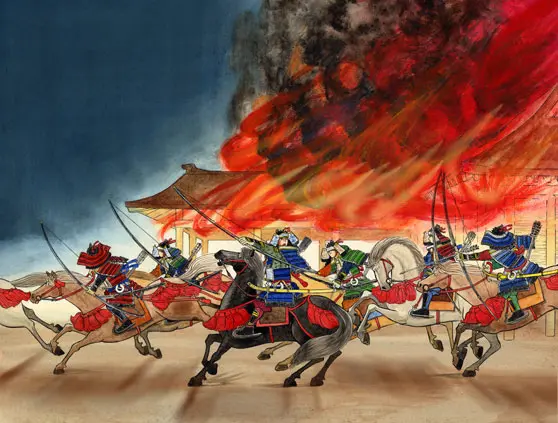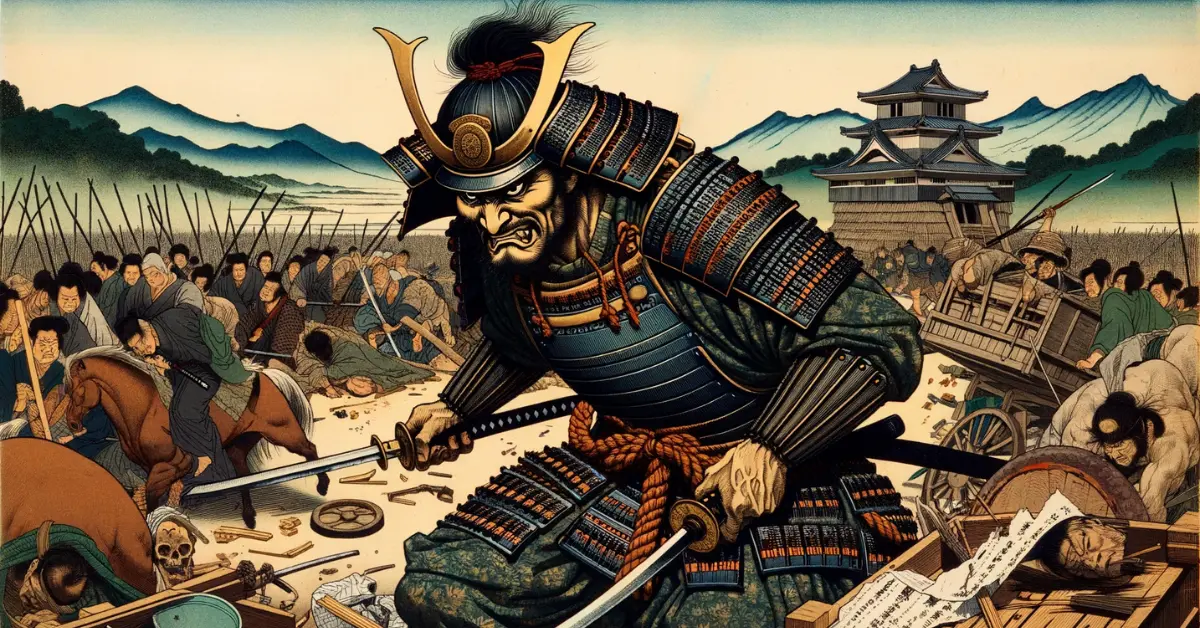In 11th-century Japan, Taira no Tadatsune rebelled against imperial authority in Shimōsa, Awa, and Kazusa provinces. The revolt, marked by clan rivalries and defiance of provincial governors, caused widespread devastation in the affected provinces. He was eventually quelled by Minamoto no Yorinobu.
Key Takeaways
- Taira no Tadatsune’s rebellion highlighted the conflicts within provinces that sought to challenge local governance and the Imperial Authority.
- Minamoto no Yorinobu’s successful suppression of the revolt marked a significant shift in power towards the Minamoto clan in the region.
- The revolt caused extensive devastation, particularly in the Bōsō Peninsula, affecting the local socio-economic landscape.
Taira no Tadatsune’s Growing Defiance
Taira no Tadatsune was a descendant of Taira no Masakado, who had earlier led an uprising against the central government in 940. Tadatsune rose to prominence in the Kantō region, particularly in Shimōsa, Awa, and Kazusa provinces, in the later Heian Period. Inheriting extensive territories, he displayed arrogance, defying provincial governors and neglecting his tax duties.
His rebellion began in 1028 with the killing of Awa no Kami (Awa governor) Taira no Suetada and the burning of Awa headquarters, marking an escalation in the conflict between the local lord and the appointed governor.
Following this incident, Tadatsune seized control of the government offices in Kazusa Province. His rebellion swiftly spread across the Bōsō Peninsula, engulfing Kazusa, Shimōsa, and Awa provinces. This drew significant attention from the imperial court in Kyoto.
Responding to Tadatsune’s rebellion, the court considered appointing a punitive force. In August, Tadatsune’s men infiltrated Kyoto but were captured with a letter to Minister Fujiwara no Norimichi (Tadatsune’s private lord), protesting against the punitive order.

The Government’s Initial Struggles
Taira no Naokata, from the Sadamori branch of the Taira clan, was eventually appointed as a punitive general, influenced by Regent Fujiwara no Yorimichi. Naokata, with a long-standing power struggle with Tadatsune’s branch, was keen to assert his authority.
The campaign under Naokata and Nakahara Narumichi failed. Despite reinforcement across various regions in 1029, the rebellion continued unchallenged.
In 1030, Tadatsune attacked the Awa government offices again, putting such fear in the new governor that he fled his post. Tadatsune then seized the local tributes and taxes for himself. The prolonged conflict had now severely exhausted the three provinces, and widespread starvation was reported.
Appointment of a New Punitive Officer
Minamoto no Yorinobu’s appointment as the new punitive general in September 1030 marked a turning point. Yorinobu, then serving as Kai no Kami (Kai governor), prepared meticulously for the campaign, contrasting with Naokata’s aggressive approach.
By 1031, Tadatsune’s position had weakened significantly. He communicated his intent to surrender through intermediaries, and eventually surrendered without a fight to Yorinobu, along with his son and followers.

Aftermath of Taira no Tadatsune’s Revolt
Tadatsune later fell ill and died in Mino Province on the way to the capital of Kyoto. Yorinobu beheaded his corpse to be presented to the court. Tadatsune’s sons were pardoned and became retainers for Yorinobu.
The court, recognizing Yorinobu’s success, appointed him as Mino no Kami (Mino governor) in 1032. This event led many Taira warriors in the Kantō region to become followers of Yorinobu, thereby expanding the Minamoto clan’s influence.
The Bōsō Peninsula, especially Kazusa Province, suffered greatly from the prolonged conflict and plundering, experiencing a dramatic reduction in cultivated land.
Frequently Asked Questions
What was the reason behind Taira no Tadatsune’s rebellion?
Taira no Tadatsune’s rebellion stemmed from his defiance against imperial authority, characterized by his refusal to obey provincial governors and neglect of tax duties. This defiance was rooted in power struggles within the Taira clan and broader regional rivalries.
How did the rebellion end?
The rebellion ended with Taira no Tadatsune’s surrender to Minamoto no Yorinobu in 1031. This came after a protracted conflict and Tadatsune’s weakened position, leading to a shift in power towards the Minamoto clan in the region.
Further Readings
- The Cambridge History of Japan: Volume 2 (Heian Japan)


